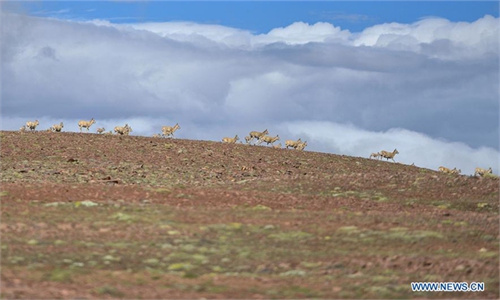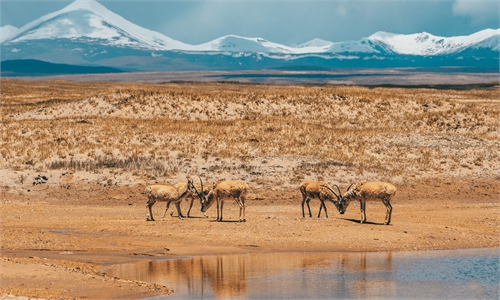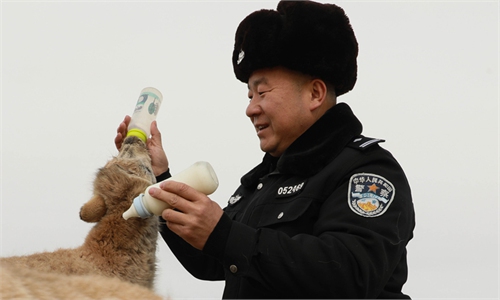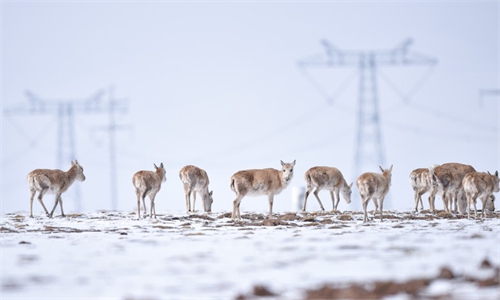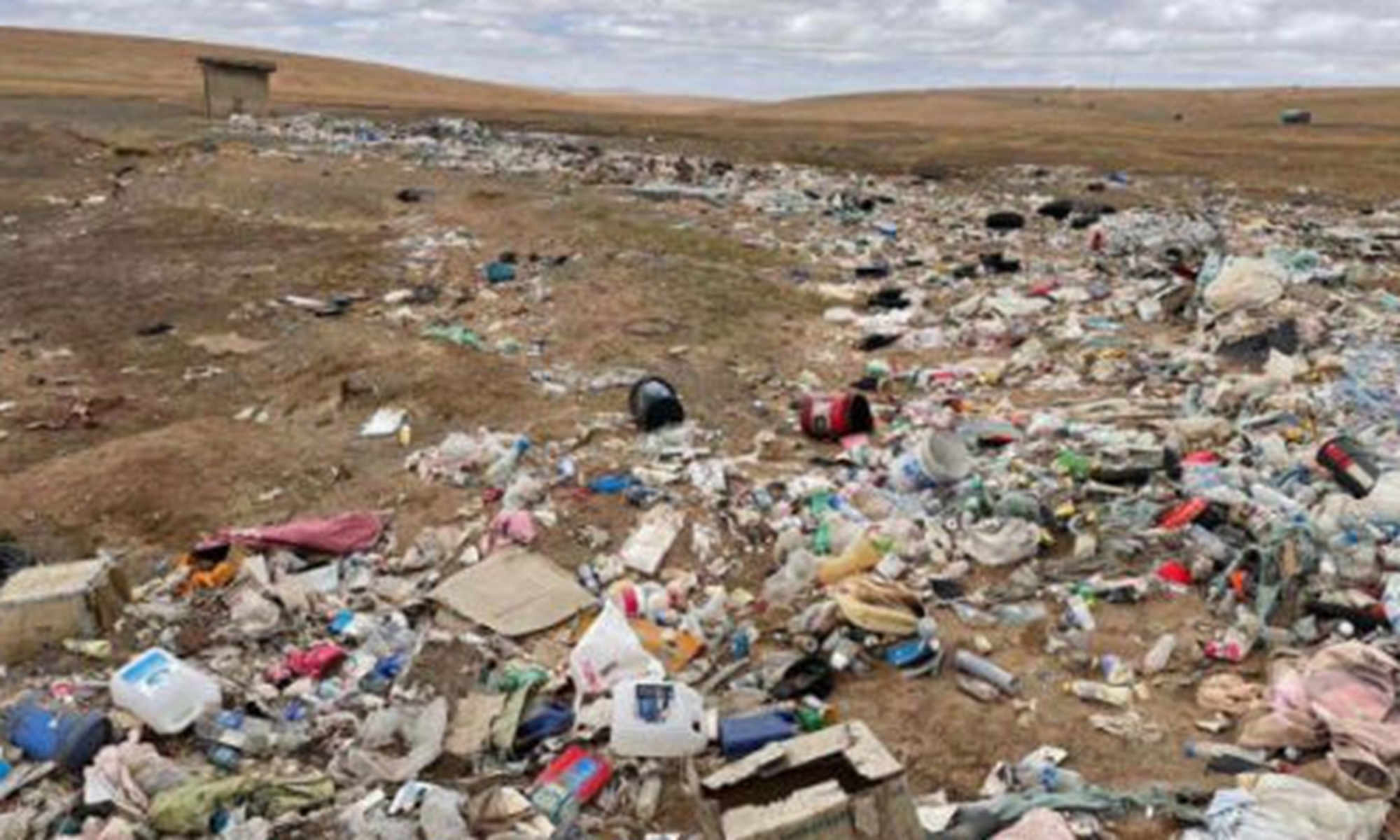
A large garbage patch about 200 meters long and 20 meters wide is reportedly found in Hoh Xil in Northwest China's Qinghai Province, a natural habitat featuring breathtaking beauty and adverse weather conditions. Photo: The Economic Observer
On the far Northwest China's Qinghai-Tibet Plateau, Hoh Xil in Qinghai Province, a natural habitat featuring breathtaking beauty and adverse weather conditions, is still not free from ecological threats as a large garbage patch about 200 meters long and 20 meters wide was reportedly found in the area.
Cans, paint buckets, plastic bags, rags, dead sheep, dead yaks... In Hoh Xil, a huge open-air garbage belt appeared along the Qinghai-Tibet highway, also within the Three-River-Source National Park or Sanjiangyuan National Park, posing a major threat to the environment of the plateau, media outlet The Economic Observer reported on Sunday.
Roughly 45,000 square kilometers in size, Hoh Xil is home to around 230 wild animals, including 74 species of vertebrates like the endangered Tibetan antelope. Sanjiangyuan National Park covers 123,100 square kilometers, and it is known as the source of the Yangtze, Yellow and Lancang rivers.
A staff member of the park told the Global Times on Monday that the park had seen the report and assigned people to confirm the issue. The amount of rubbish and its source were unknown, pending the completion of the field investigation, said the staff member.
Li Junsheng, a deputy director of the Research Center for Eco-Environmental Science at the Chinese Research Academy of Environmental Sciences, told the Global Times on Monday that it's not yet appropriate to say if the garbage patch will harm the local environment. It's still unclear whether the garbage spontaneously gathered or was collected by local personnel such as environmental volunteers to await shipment and processing.
If environmental personnel put a leak-proof mat under the garbage, it would not cause damage to the environment, Li noted.
The media outlet said the information on the garbage belt was provided by two tourists who visited the area on May 28 and June 11, respectively. The tourists also provided many photos and videos of the garbage belt.
"When we were driving through the area, we saw the rubbish belt, very conspicuous. So we got out of the car and went to the rubbish belt..." said one of the tourists who went there on May 28, noting that the rubbish patch was very smelly.
The media outlet said that only about 200 people live near the rubbish patch, including the employees of restaurants, hotels, gas stations and supermarkets. Some truckers and tourists have driven by.
Li said some garbage may give off harmful ingredients, pollute the water, poison animals and humans, and be eaten by wild animals and kill them.
Li said that relevant laws such as the National Park Protection Act should be amended and published as soon as possible to regulate human activity in the environmentally fragile region.
It is not the first time that The Economic Observer reported a rubbish problem along the Qinghai-Tibet highway. A similar problem was described in the media outlet's previous report on September 19, 2019.
Sun, another tourist who was in the area months ago, told the Global Times on Monday that her friends and her went to Hoh Xil's Budongquan with an altitude of above 4,600 meters and were upset and angry to see rubbish in the cold, thin river.
"There were plastic bags, bottles and face masks along the Sanjiangyuan which includes the source of our mother Yangtze River," said Sun, calling on other tourists to take back their waste.
Sun said she and her friends spent about half an hour to collect rubbish in a large bag and take it away.
The garbage problem along the Qinghai-Tibet Highway has a long history.
"In early 2017, after the Chinese government sent a letter to the IUCN and UNESCO promising that it will take measures to counter these threats, Hoh Xil was declared a World Heritage site," Wen Cheng, a research scholar from the School of Life Sciences at Peking University, who has visited Hoh Xil six times since May 2015, told the Southern Weekly in a previous report.
The Qinghai-Tibet Highway and Railway, which crosses Hoh Xil, connects the nature reserve to the outside world. Over the years, more people including local officials and volunteers have made contributions to local environmental protection.
A Beijing-based postgraduate surnamed Wu, who joined the volunteer activity for Sanjiangyuan water protection in 2019, told the Global Times on Monday that the Qinghai-Tibet Plateau lies at a high altitude, and low temperatures make it difficult for garbage to degrade, which could easily damage the fragile environment. Wu and other volunteers picked up and classified rubbish in Hoh Xil and collected rubbish waiting for further treatment.

